Of the three calibers available in the 1896 model Bergmann pistol, the 6.5mm No.3 was the most popular. Approximately 4,000 of these guns were produced, and they found a worldwide following. We have examples below of guns sold to Thailand and through the English Westley Richards company, for example.
The No.3 pistol was pretty much identical in concept to the 5mm No.2 Bergmann, but scaled up for the slightly larger 6.5mm cartridge. There were a few differences, which we will discuss in a moment. First, though, let’s take a look at the 6.5mm Bergmann ammunition. Like the 5mm variety, the 6.5mm was initially produced without an extractor groove, as the first several hundred No.3 pistols were made without extractors (see the article on the No.2 for more explanation of this). In addition to having a significant taper to the case body, the 6.5mm was also a bottlenecked design. Because of the popularity of the No.3 pistol, the ammo was manufactured by several companies – Wilson lists loadings by Eley, DWM, a company called Deutsche Metallpatronen Fabrik, and a couple not identified by maker. These ranged from DWM’s 65 grain bullet at 722fps (220 m/s) to an 81.7 grain bullet at 775 fps (236 m/s). Compared to other cartridges of roughly the same diameter like the 6.35mm Browning (.25 ACP), these were unusually heavy bullets, and thus unusually long. Consider that 80 grains was a standard bullet weight for the 7.63mm Mauser.
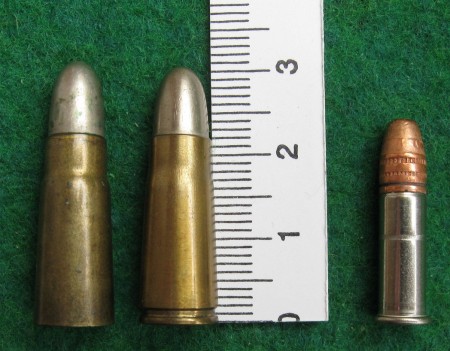
Wilson grants the 6.5mm Bergmann with “appreciable stopping power” (particularly with the lead bullets), and rates it much superior to the .25 ACP (which was not introduced until 1905). That may be setting the bar pretty low today, but it was a respectable achievement for a safe and reliable pocket pistol in 1896.
In terms of design, the No.3 Bergmann did use a dust cover over the ejection port, which reciprocated automatically with the bolt. The smaller No.2 did not include this feature. In addition, shortly after the beginning of No.3 production the method of retaining the barrel was changed. Early examples use a retaining screw and a lug on the barrel, but the lug was changed for a fully threaded barrel fairly quickly. In these models, removing the barrel requires removing the retaining screw and then unscrewing the barrel. Since the retaining screw holds it in place and maintains headspace, the barrel does not have to be torqued down when installed – thus making is still easy to remove for cleaning.
Bergmann was willing to accommodate quite a few design alterations, including different barrel lengths, different grips, and even things like set triggers for target shooting. Here, for example, is a target model of the No.3 in 6.5mm, complete with improved sights, a 7.25 inch long barrel, and set trigger:
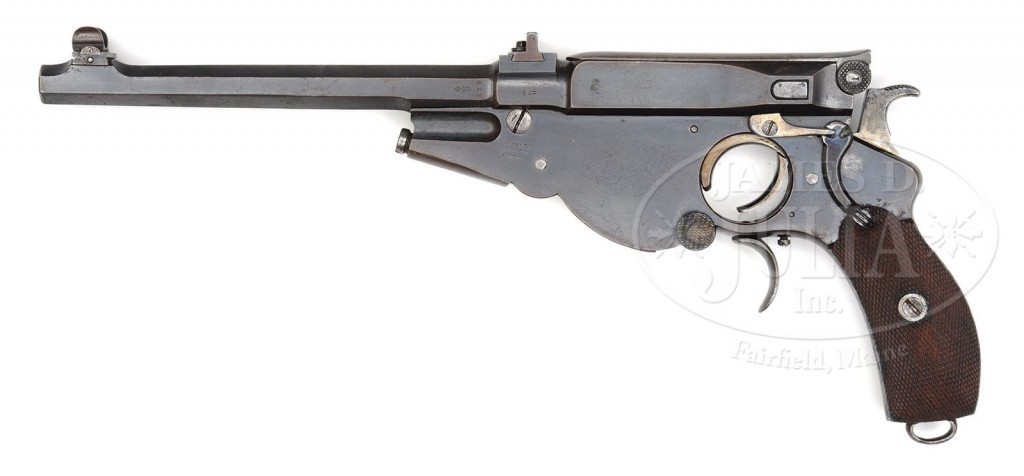
Loading the No.3 was a process identical to the earlier pistol variants – see my article on the No.2 for details. The clips, of course, were larger to accommodate 5 rounds of 6.5mm ammo, and not interchangeable with other calibers of Bergmann.
On all the versions of the 1896 Bergmann you will find a maker’s mark showing a bearded miner holding a pickaxe. There are two versions of this mark, however. The basic one has just the miner inside an oval, and this was used on pistol manufactured at the Bergmanns Industriewerke. As time went on, though, Bergmann’s own factory began tooling up for automobile production as well, and Bergmann (ever the business-minded industrialist) outsourced production of pistols when he ran short of factory floor space. The company the built them on contract was V.C Schilling or Suhl, Germany (a name which will be recognized by anyone interested in German arms). The guns made by Schilling use the same miner emblem, but with “GUGGENAU” above his head and “V.C.S. SUHL” below his feet. As best I can tell, there is no particular difference in quality or mechanical detail between the two types.
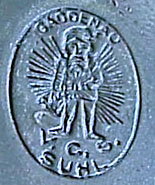
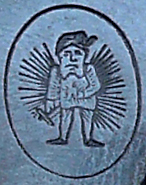
There are references made in print to combination holster/stocks being available as a factory option for the No.3, but these are very rare.
I noted in my article on the No.2 Bergmann that virtually all of those that I have seen are marked “611” on the rear left side of the barrel. Well, the No.3 pistol exhibit a similar trend, with roughly 75% of the ones I have seen having a “278” stamped in that same location (the ones that do not have it are blank, not stamped with any other number there). Again, I do not know the significance of this, although it is seen on pistols with both the early and late type of barrel removal.
Technical Specs
Caliber: 6.5mm Bergmann
Bullet Weight: 64.8-81.7 grains
Muzzle Velocity: 710-775 fps (216-236 m/s)
Clip Capacity: 5 rounds
Overall Length: 10.0 in (255mm)
Barrel Length: 4.5 in (114mm)
Weight: 31.2 oz (885g)
Action: Straight blowback
References
Ezell, Edward C. Handguns of the World. Stackpole Books, New York, 1981.
Reinhart, Christian and am Rhyn, Michael. Fastfeuerwaffen II.
Wilson, R.K. Textbook of Automatic Pistols. Samworth, 1934 (reprinted by Wolfe Publishing, Prescott AZ, 1990).
Now, how about some photos of different variances of the No.3? These pictures all come from the James Julia auction house, which sold a significant number of Bergmann pistols (from the Schroeder and Sturgess collections) in a September 2013 auction.
First, an early but otherwise typical No.3, with factory case:
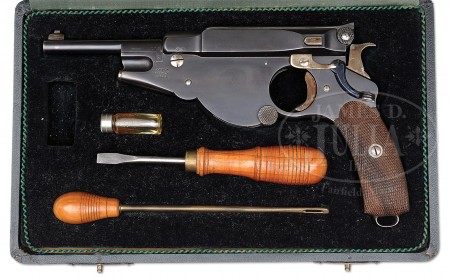
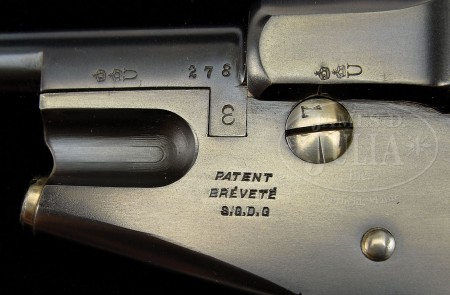
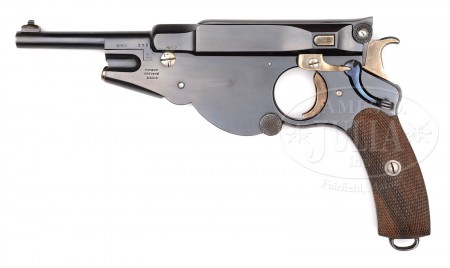
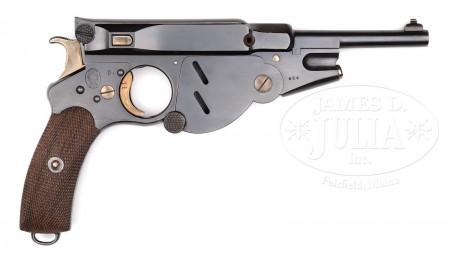
Next, an example with Thai markings and a groove in the backstrap for attaching a shoulder stock (the Thais seem to have been interested in stocked self-loading pistols, as they also bought a number of Grandpa Nambu pistols with stock attachments). This example is from mid-production with a serial number of 2485 and an extractor:
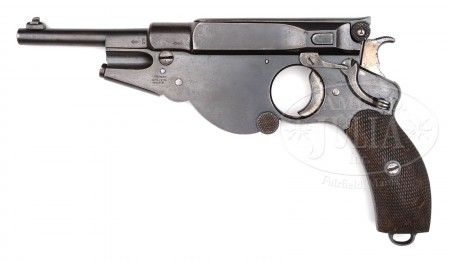
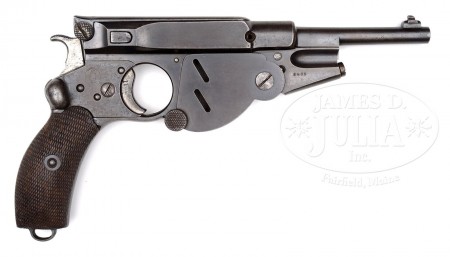
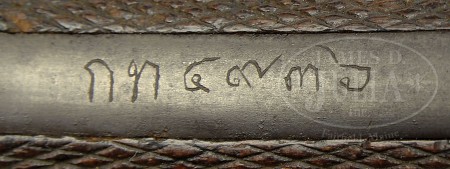
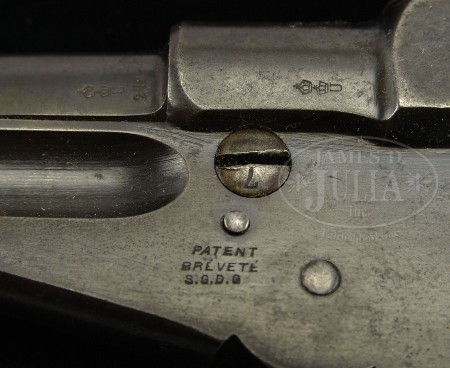
Next, a toolroom prototype of the No.3, serial number 46. The significance of the 3/8″ threaded hole below the barrel lug is unknown.
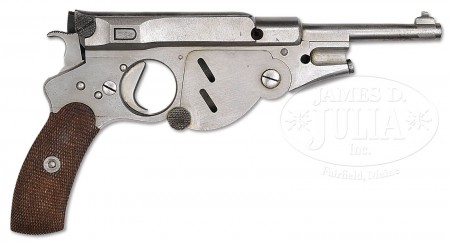
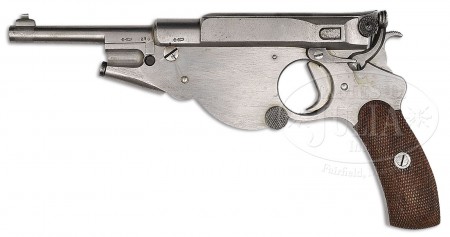
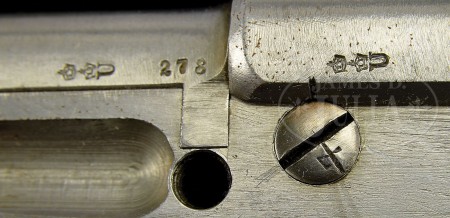
Next, another early No.3, this one being serial number 104. Interestingly, this one has a threaded barrel despite its very low number.
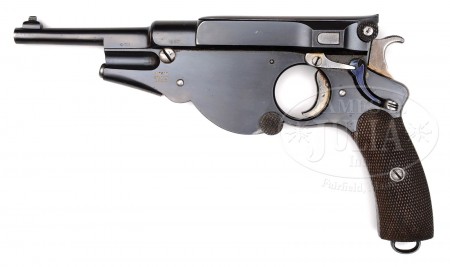
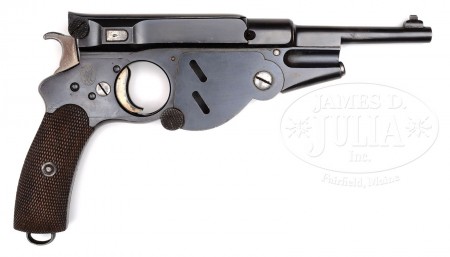
Next, another early No.3, This one serial number 106 (only two after the previous set of photos). This one has a much more prominent V.C. Schilling inscription, for an unknown reason. Perhaps it was made for retail resale by Schilling?
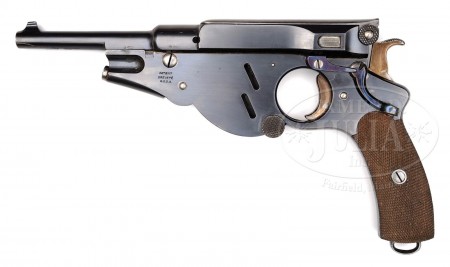
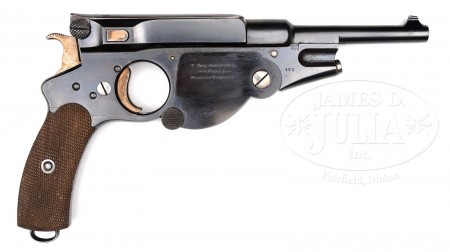
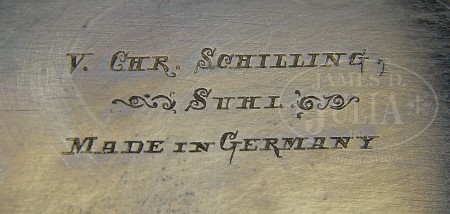
Lastly, we have a special target model No.3. Its non-standard features include a 7.25 inch barrel, adjustable target sights, a trigger guard spur, and set trigger. This is a relatively early gun – serial number 898 – but is late enough to have been made with an extractor. The set trigger is used by first pressing upward on the top lever in the trigger guard, which sets the bottom trigger to a very light pull weight.
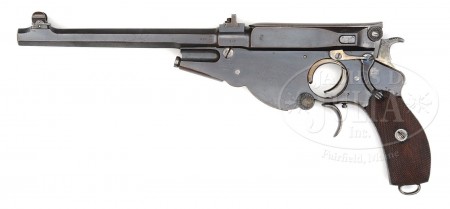
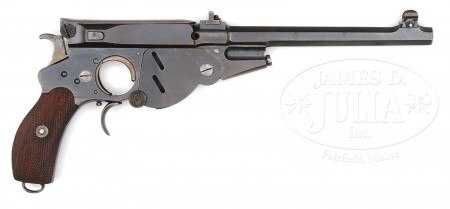
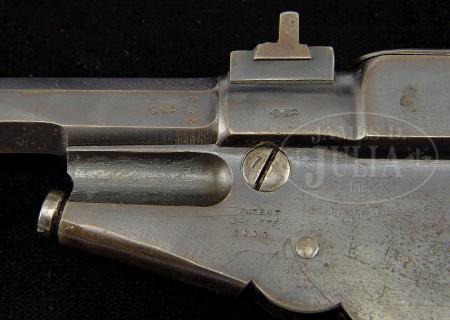


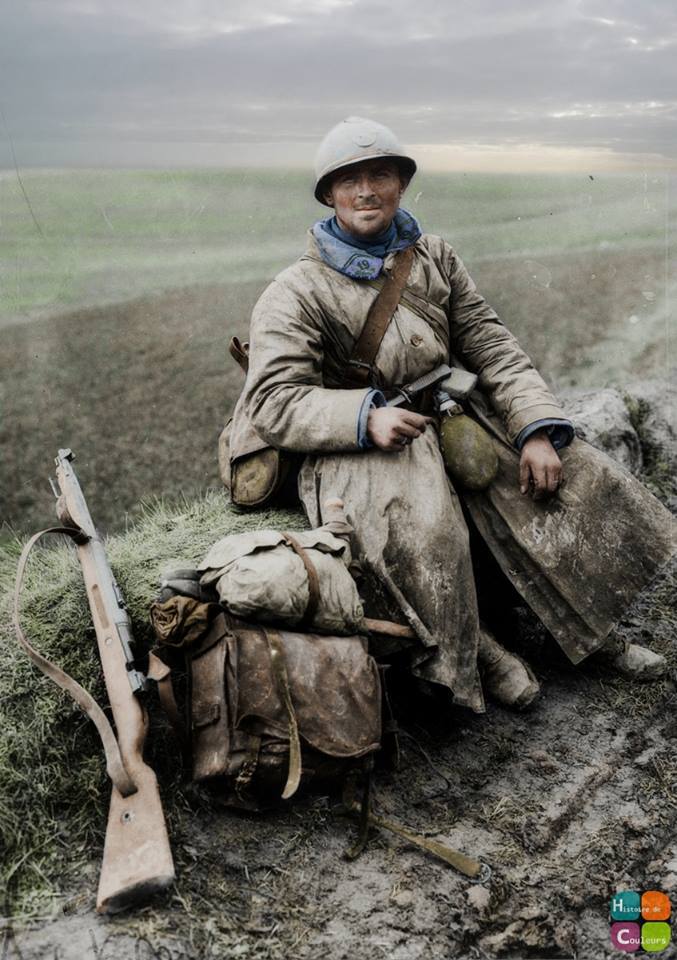
I see that the target Bergmann looks like it could really reach out and touch things in a lethal manner. The front sight seems to have ears for protection from bashing into stuff and to help reduce glare. As for the trigger, I’d have to be careful…
Thanks very much for this great monograph on these rare pistols. I am enjoying the series very much.
This looks more like it. Nota-bene, the features such as manageable grip for small handed users are of advantage. What I see as a desirable is sub-sonic nature of not that light round, although if it was my choice I’d go for something like 7.5mm and still be blowback-able. Must have been fairly comfortable for practise.
BTW, not to sway from subject too far, yet to have some comparison with “state-of-art” some just 20 years earlier:
http://www.littlegun.info/arme%20francaise/artisans%20c%20d/a%20devisme%20gb.htm
Absolutely gorgeous!
I check 6.5×22 Bergmann on
http://www.municion.org/bergmann/6_5x22.htm
It states that it was produced by Rheinische Metallwarenfabrik too (better known as Rheinmetall), additionally it states that 6,5 Bergmann was used in Hamilton 1901 pistol:
http://forum.valka.cz/viewtopic.php/p/392518
Have you any more info about this gun?
Some of those bullet weights approach today’s standard .380 ACP/9mm Kurz loadings. Pretty impressive for something significantly smaller than the .32 and not much larger than the .25! Especially considering the velocities cited. Not too shabby for the day, certainly.
I have truely been enjoying the “Bergmann Pistols” series lately. Interesting handguns. Well done Forgotten Weapons. Thank you.
Oh man! And to think I loved the 6.5mm Bergmann M1896 BEFORE I saw that long barreled gun!
That is literally the ONLY such picture I have EVER seen! Bravo!
Speaking of that long barrel target pistol, does anyone think it would be easily mistaken for a space opera gun? I mean, it looks like it could shoot an ionized pulse smack through Imperial Stormtrooper armor with ease. The magazine cover plate could be mistaken for a battery cover on a blaster. And unlike early sci-fi guns, it simply looks real enough to work. Most Star War blasters were modified real guns in the first place. Sterling SMGs, Lewis guns, MG34, Margolin MCM, Sturmgewehr 44, M16, Mauser C96, etc… You don’t need to make a space gun from scratch.
I contacted a friend who is of Thai origin and he was kind enough to take the time to translate the inscriptions shown in Picture #11 ( as counted from the top ).
The four right-hand figures are the Numbers 4,9,3 and 6. The two left-hand figures are from the Thai alphabet, which has 44 letters, so there is no direct English alphabetical equivalent. However, the figure on the extreme left is the first letter of the Thai alphabet, which corresponds to, but is not the same as, our letter “A”. The whole string of inscriptions is therefore probably a Serial Number best described as # **4936.
Many thanks to “Pop” Tharitimanont for his help in deciphering this!
Cool, thanks!
The thai (or more corektly Siameese) markings consist of a town name and a number. they are the local registration of the firearm. I hawe two Bergmann Bayards and a danish made shootgun(Georg Christensen), with theese markings. and one H Pieper of Soerst in Germany made single barrel paradox gun, with the siameese textin gold: belongs to the second siameese king, jumpinggun.
The screw bwneeth thw barrel on the model 96 Bergmann is a quick releese of the barrel. extra barrels in other kalibers could be had.
In 1904 Heinrich Krieghoff took over the Schilling plant and the produktion line and spare oarts for the model 96 HK made the last 1000 or so? of the model 96
Whoa, Peter, I didn’t know that before. I’ve seen factory markings from different arsenals or contracted manufacturers, but local town markings for registration? Thailand (or Siam, as it was called back then) must have been really genre-savvy to consider gun registration before the twenty-first century. Swiping a gun from a local was probably a bad idea, as getting caught using it in a hold-up in another district would convict a crook of several things…
Ah, that sheds even more light on the Thai ( Siamese ) inscriptions. If what you are saying is correct, the final interpretation of the example featured in this article would then be Serial # ( insert initials of city / town ) 4936.
I’m a big fan of the Bergmann pistols and was luck enough to buy one about twenty years ago when they were just about affordable (they are legal in UK). I became interested in them after reading about the so-called Tottenham Outrage of 1909 in which a pair of Latvian anarchists were involved in a two hour running gun battle with police and armed civilians, it’s a great story and well worth looking up. The anarchists used a 1900 Browning and a Bergmann No.3, firing around 400 rounds between the two.